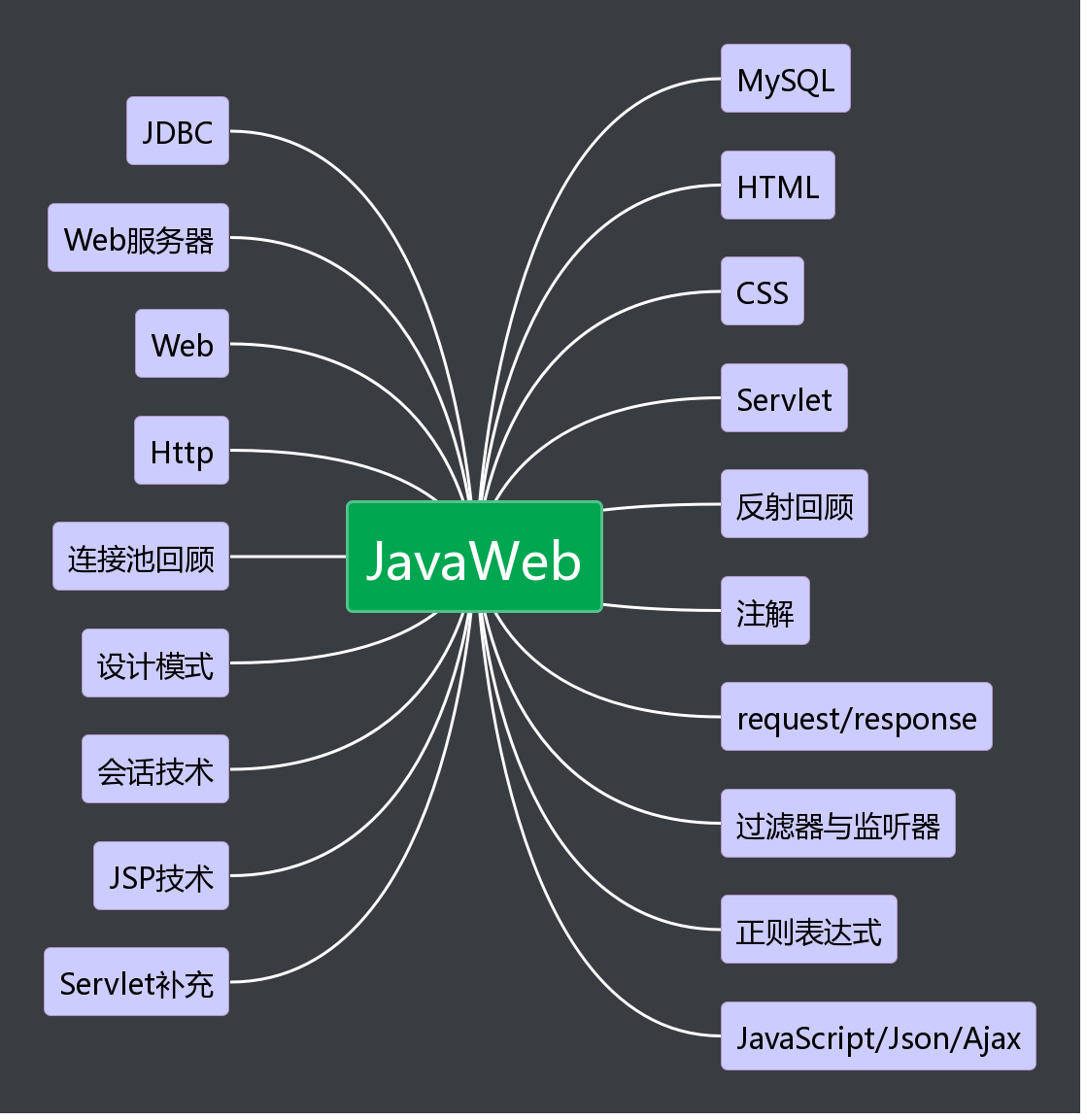1.思维导图

2.代码部分
Jackson
//将java对象转换为json字符串
Province p1 = new Province(1,"咖啡");
List<City> cityList1 = new ArrayList<>();
cityList1.add(new City(11,"单品咖啡"));
cityList1.add(new City(12,"速溶咖啡"));
cityList1.add(new City(13,"混合咖啡"));
p1.setCityList(cityList1);
//p1 -> json字符串
ObjectMapper objectMapper = new ObjectMapper();
String jsonStr1 = objectMapper.writeValueAsString(p1);
System.out.println(jsonStr1);
Province p2 = new Province(2,"茶叶");
List<City> cityList2 = new ArrayList<>();
cityList2.add(new City(21,"青茶"));
cityList2.add(new City(22,"绿茶"));
cityList2.add(new City(23,"红茶"));
p2.setCityList(cityList2);
//provinceList -> json字符串
List<Province> provinceList = new ArrayList<>();
provinceList.add(p1);
provinceList.add(p2);
String jsonStr2 = objectMapper.writeValueAsString(provinceList);
System.out.println(jsonStr2);
//map -> json字符串
Map<String,Province> map = new HashMap<>();
map.put("p1",p1);
map.put("p2",p2);
String jsonStr3 = objectMapper.writeValueAsString(map);
System.out.println(jsonStr3);
//jsonStr1 -> Province对象
Province province = objectMapper.readValue(jsonStr1, Province.class);
System.out.println(province);
//jsonStr2 -> List对象
List<Province> list = objectMapper.readValue(jsonStr2, List.class);
System.out.println(list);
//jsonStr3 -> Map对象
Map<String,Province> myMap = objectMapper.readValue(jsonStr3,Map.class);
System.out.println(myMap);
AJAX入门案例
function createXMLHttpRequest(){
var xmlHttp;
try{ // Firefox, Opera 8.0+, Safari,Google Chrome
xmlHttp=new XMLHttpRequest();
} catch (e){
try{// Internet Explorer
xmlHttp=new ActiveXObject("Msxml2.XMLHTTP");
}catch (e){
try{
xmlHttp=new ActiveXObject("Microsoft.XMLHTTP");
}catch (e){}
}
}
return xmlHttp;
}
function ajax_get(){
// * 1.创建异步的XMLHttpRequest对象.
var xhr = createXMLHttpRequest();
// * 2.设置监听:监听对象的状态的变化,触发一个函数.
xhr.onreadystatechange = function(){
if(xhr.readyState == 4){
if(xhr.status == 200){
var data = xhr.responseText;
// 获得div:
var div1 = document.getElementById("div1");
div1.innerHTML = data;
}
}
}
// * 3.打开链接:
xhr.open("GET","${pageContext.request.contextPath}/ajaxServletDemo1",true);
// * 4.发送数据:
xhr.send();
}
function ajax_post() {
// * 1.创建异步的XMLHttpRequest对象.
var xhr = createXMLHttpRequest();
// * 2.设置监听:监听对象的状态的变化,触发一个函数.
xhr.onreadystatechange = function(){
if(xhr.readyState == 4){
if(xhr.status == 200){
// 获得响应的数据:
var data = xhr.responseText;
// 获得div1:
var div1 = document.getElementById("div1");
div1.innerHTML = data;
}
}
}
// * 3.打开链接:
xhr.open("POST","${ pageContext.request.contextPath }/ajaxServletDemo1",true);
// 设置请求头:
xhr.setRequestHeader("Content‐Type","application/x‐www‐form‐urlencoded");
// * 4.发送数据:
//POST请求传递参数:需要将参数写到send方法中.
xhr.send("id=3&name=张三");
}
ECMAScript:方法
function method01(msg1, msg2, msg3) {
// console.log(msg1 + " , " + msg2 + " , " + msg3);
//arguments:属于方法的内置对象,包含是实际参数
for (var i = 0; i < arguments.length; i++) {
console.log(arguments[i]);
}
return "hello js function1";
}
var method02 = function (msg1, msg2, msg3) {
// console.log(msg1 + " , " + msg2 + " , " + msg3);
//arguments:属于方法的内置对象,包含是实际参数
for (var i = 0; i < arguments.length; i++) {
console.log(arguments[i]);
}
return "hello js function2";
}
var method03 = new Function("msg1,msg2,msg3", "console.log(msg1+','+msg2+','+msg3);return 'hello js function3';");
ECMAScript:事件
<head>
<meta charset="UTF‐8">
<title>Title</title>
<script>
function fn1() {
console.log("点击了");
}
</script>
<head>
<meta charset="UTF‐8">
<title>Title</title>
<script>
//监听页面加载完成
window.onload = function () {
document.getElementById("btn").onclick = function () {
console.log("点击了");
}
}
</script>
</head>
<body>
<button id="btn" ></button>
</body>
ECMAScript常用事件:onload
<img id="girl" src="01.jpg" onload="fn1()">
<script>
function fn1() {
console.log("这是一张图片~")
}
</script>
<head>
<title>ECMAScript常用事件之onload</title>
//如果使用dom分配事件,推荐使用这种方式
<script>
window.onload = function () {
console.log("页面加载完成");
var ele = document.getElementById("print");
ele.onclick = function () {
console.log("点击图片")
}
}
</script>
</head>
<body>
<img src="01.jpg" id="print" >
</body>



